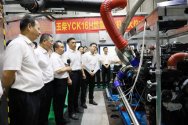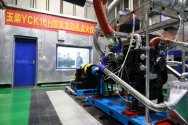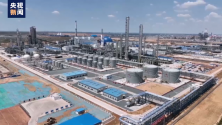Another major breakthrough from Harbin Institute of Technology. This new material will have critical applications in space and deep underground explorations.
News release in Chinese by HIT:
Hypocrystalline ceramic aerogels for thermal insulation at extreme conditions
Thermal insulation under extreme conditions requires materials that can withstand complex thermomechanical stress and retain excellent thermal insulation properties at temperatures exceeding 1,000 degrees Celsius,,. Ceramic aerogels are attractive thermal insulating materials; however, at very high temperatures, they often show considerably increased thermal conductivity and limited thermomechanical stability that can lead to catastrophic failure,,. Here we report a multiscale design of hypocrystalline zircon nanofibrous aerogels with a zig-zag architecture that leads to exceptional thermomechanical stability and ultralow thermal conductivity at high temperatures. The aerogels show a near-zero Poisson’s ratio (3.3 × 10−4) and a near-zero thermal expansion coefficient (1.2 × 10−7 per degree Celsius), which ensures excellent structural flexibility and thermomechanical properties. They show high thermal stability with ultralow strength degradation (less than 1 per cent) after sharp thermal shocks, and a high working temperature (up to 1,300 degrees Celsius). By deliberately entrapping residue carbon species in the constituent hypocrystalline zircon fibres, we substantially reduce the thermal radiation heat transfer and achieve one of the lowest high-temperature thermal conductivities among ceramic aerogels so far—104 milliwatts per metre per kelvin at 1,000 degrees Celsius. The combined thermomechanical and thermal insulating properties offer an attractive material system for robust thermal insulation under extreme conditions.
News release in Chinese by HIT:
极端条件(例如深空和深地等环境中复杂机械载荷和剧烈温度变化)下的热控制,要求隔热材料具备优异的热-力学特性和隔热性能。传统陶瓷气凝胶超隔热材料存在困扰其近百年的“力热互斥”瓶颈难题,例如陶瓷无定形态增韧的同时引发高温析晶粉化,低热膨胀效应受困于结构几何构型和力学特性,力热协同增强的同时牺牲隔热性能,以及低密度降低声子传热的同时无法有效阻隔高温热辐射等,难以满足实际极端环境热控制需求。
鉴于此,本文报道了一种气凝胶多尺度超结构设计和制备方法,采用半晶质(hypocrystalline)陶瓷材料设计结合zig-zag宏观结构设计,赋予陶瓷气凝胶近零泊松比(3.3×10-4)和近零热膨胀(1.2×10-7/℃)的“双零”反常规物理性质,从而获得了轻质超柔韧、高热稳定性及高温超隔热等特性。同时,研究团队创新提出了一种“气体湍流”辅助静电纺丝直接制备三维纳米纤维陶瓷气凝胶的方法,拓展了传统静电纺丝制备二维膜材料的束缚,为实现材料的多尺度超结构设计、高性能、大规模及低成本制备提供了新思路和新方法。该材料弹性可恢复压缩应变高达95%,兼具优异的拉伸(断裂应变>40%)和弯曲(弯曲应变>90%)变形能力;1万次高频剧烈热震(约200℃/s)以及长期高温(>1000℃)有氧暴露下强度损失及体积收缩几乎为零;此外,半晶质陶瓷对碳展现了更强的包覆能力,提高了碳材料的高温抗氧化性能,从而有效阻隔了高温热辐射,实现了“低密度”陶瓷气凝胶目前最低高温导热系数(20mg/cm3、1000℃下小于100mW/mK),弥补了轻质气凝胶材料在高温隔热领域的短板。该材料同时具备电容式自感知特性,可实时监测隔热材料的结构损伤,进一步增强了热控制系统的安全可靠性。
成果对满足我国航天等领域在极端、复杂服役条件下的隔热保温、减重增容、节能降耗、系统安全和性能稳定,具有重要的科学意义和实用价值。



